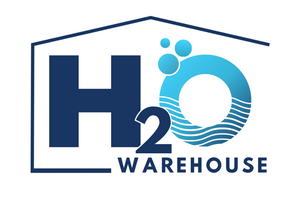Sulphur
Addressing Sulphur in Your Water: Understanding the Causes and Solutions
Sulphur, also spelled as sulfur, is a naturally occurring element that can find its way into water sources, particularly groundwater, presenting challenges for homeowners due to its distinct smell and potential impact on water quality. Understanding the sources, effects, and solutions for sulphur contamination is essential for maintaining clean and odour-free water for household use.
The Presence of Sulphur in Water:
- Sulphur Odour: One of the most noticeable characteristics of sulphur-contaminated water is its distinctive "rotten egg" smell, caused by the presence of hydrogen sulphide gas. This unpleasant odour can be detected in both hot and cold water and is often most noticeable when running taps or using hot water for bathing or washing.
- Taste and Discolouration: In addition to its odour, sulphur-contaminated water may also have a metallic or bitter taste, making it unpalatable for drinking or cooking. Furthermore, sulphur can contribute to the discolouration of water, leading to yellowish or brownish stains on fixtures, appliances, and laundry.
- Corrosion and Scaling: Sulphur compounds in water can contribute to corrosion and scaling of plumbing fixtures and appliances, particularly those made of metal. Over time, this corrosion can weaken pipes, cause leaks, and reduce the efficiency and lifespan of household plumbing systems.
Causes of Sulphur Contamination:
- Natural Sources: Sulphur can occur naturally in groundwater as a result of geological formations or the presence of sulphur-bearing minerals in the earth's crust. In areas with volcanic activity or high sulphur content in soil and rock formations, groundwater may become contaminated with sulphur compounds.
- Microbial Activity: Sulphur-reducing bacteria (SRB) present in soil, sediment, or water can produce hydrogen sulphide gas through the decomposition of organic matter containing sulphur compounds. These bacteria thrive in anaerobic environments, such as deep wells or plumbing systems, where oxygen levels are low.
Solutions for Sulphur Removal:
- Aeration: Aeration involves exposing water to air, allowing hydrogen sulphide gas to dissipate naturally. Aeration systems, such as aerators or air-stripping towers, can effectively remove sulphur odours from water by promoting the release of dissolved gases.
- Oxidation and Filtration: Oxidation methods, such as chlorination, ozone treatment, or potassium permanganate injection, can oxidise hydrogen sulphide gas into insoluble sulphur particles, which can then be removed through filtration using activated carbon or specialty sulphur filters.
- Water Softeners: In cases where sulphur contamination is accompanied by water hardness, water softeners equipped with specialty resin filters or sulphur-specific media can effectively remove both sulphur and mineral deposits, providing clean and softened water.
Conclusion:
Sulphur contamination in water can lead to unpleasant odours, taste issues, and aesthetic concerns, affecting the quality and usability of household water supplies. By understanding the sources and effects of sulphur contamination and implementing appropriate treatment methods, homeowners can effectively mitigate sulphur-related issues and ensure access to clean, odour-free water for their everyday needs. Consulting with water treatment professionals and conducting water quality tests can help identify the most suitable solutions for addressing sulphur contamination based on specific water conditions and homeowner preferences.
- Choosing a selection results in a full page refresh.

